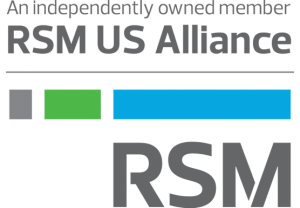Insights
Reporting of unusual nonemployee compensation for tax year 2020
ARTICLE | December 09, 2020
Authored by RSM US LLP
Effective tax year 2020, the IRS has introduced new Form 1099-NEC, Nonemployee Compensation, to report nonemployee compensation. When Congress passed the Protecting Americans from Tax Hikes Act of 2015 (PATH Act), the law accelerated the due date (from Feb. 28 to Jan. 31) for filing any Form 1099 that included nonemployee compensation and eliminated the automatic 30-day extension for such forms (see P.L. 114-113).
The new Form 1099-NEC shifts the reporting of certain compensation paid to nonemployees from Box 7 of Form 1099-MISC to Box 1 of Form 1099-NEC for required reporting of compensation of $600 or more paid to nonemployees (e.g., board members or independent contractors) who are U.S. persons and non-exempt recipients. This new form captures the same information that companies have historically reported, but is still a significant change for both U.S. withholding agents and non-U.S. companies that are 50 percent or more U.S.-owned and considered U.S. payors with Form 1099 reporting obligations.
However, although compensation amounts paid to nonemployees will need to be reported on Form 1099 NEC rather than on Form 1099-MISC, there are certain unusual payments associated with nonemployee compensation, such as Section 409A and Section 280G payments, that must still be reported on a Form 1099-MISC.
Overview
Form 1099-NEC (2020)
In general, Form 1099-NEC is required if a company pays a U.S. person who is a non-exempt recipient $600 or more in nonemployee compensation for service(s) as part of its trade or business. Nonemployee compensation payments reportable on Form 1099-NEC include fees, commissions, prizes, awards and other forms of compensation or benefits for services rendered by someone who is not an employee. In addition, cash payments for fish purchased from those in the business of catching fish, payments to an attorney (excluding gross proceeds) and working interest on oil or gas royalty payments of $10 or more are nonemployee compensation and should be reported in Box 1 of Form 1099-NEC.
Form 1099-NEC must also be filed for each person for whom U.S. “backup” federal income tax was withheld. This requirement applies regardless of the amount paid to the nonemployee during the tax year (i.e., the $600 threshold does not apply), and the withholding should be reported in Box 4 of Form 1099-NEC.
Besides filing a federal Form 1099-NEC, companies may also be required to file separate state-equivalent forms reporting nonemployee compensation. Some states are beginning to publish direct reporting requirements for state-equivalent 1099-NEC forms, but most state guidance is still pending. Companies should implement a process for evaluating, monitoring and complying with its state-equivalent Form 1099-NEC filing obligations now.
New requirements requiring reporting on BOTH Forms 1099-NEC and 1099-MISC
In certain unusual instances, nonemployee compensation paid during the year must be reported on Form 1099-NEC, but a portion of the amount associated with the payment must also be reported on Form 1099-MISC. The portion to be reported on Form 1099-MISC will depend on section 280G or section 409A calculations. This is because two compensation-related reporting boxes were left on Form 1099-MISC instead of being transferred to Form 1099-NEC (the Section 280G/Section 4999 “Excess Parachute Payment” box remains on Form 1099-MISC, Box 13, and the Section 409A failure box remains on Form 1099-MISC, Box 14, previously Box 15b).
Explanation of boxes
Section 409A Nonqualified Deferred Compensation Box (now Form 1099-MISC, Box 14)
Internal Revenue Code Section 409A governs nonqualified deferred compensation plans, providing specific rules on how to design compliant Section 409A nonqualified deferred compensation plans and how and when to include nonqualified deferred compensation as taxable compensation. Most nonqualified deferred compensation plans are designed to meet a Section 409A exemption or satisfy the Section 409A requirements. Payments from a compliant Section 409A plan are generally included in taxable compensation in the year in which the amount is paid or made available to the employee or nonemployee plan participant.
However, when a plan is either improperly designed or improperly operated (and thus fails to satisfy Section 409A or one of the exemptions), the amount that the company hoped to defer is no longer deferred (taxable in the year of failure, and some amounts may possibly be taxable in later years), and the amount is subject to an additional 20 percent income tax on top of the ordinary income tax rate. In addition, a failed Section 409A amount may also be subject to an additional underpayment of interest penalty if the failed amount is not reported in a timely manner as compensation in the year(s) of failure.
Amounts that have failed Section 409A are reported to employees on Form W-2, Box 12, using Code Z. Amounts that have failed Section 409A are reported to nonemployees (such as directors or certain independent contractors) on Form 1099-MISC, Box 14. This reporting notifies the employee or contractor and the IRS that the additional tax is due.
The failed amount may not be exactly the same as the total taxable amount from the nonqualified deferred compensation plan for the year.
Excess Parachute Payment box (Form 1099-MISC, Box 13)
Internal Revenue Code Section 280G (sometimes called the “Golden Parachute Payment” rule) provides that a compensatory amount paid to a disqualified individual arising from a section 280G Change in Control is a “parachute payment” unless specifically excluded. If the disqualified individual’s parachute payments under the calculation are at least three (3) times a base compensation amount, the disqualified individual has an excess parachute amount equal to the parachute payments less one times the base compensation amount. Section 4999 applies a 20 percent excise tax on an individual that has an excess parachute payment.
Excess parachute payments are reported on Form W-2, Box 12, Code K. Excess parachute payments to nonemployees, such as directors or other independent contractors, are reported on Form 1099-MISC, Box 13, so the employee or contractor and the IRS know that the 20 percent excise tax is due on this amount.
The excess parachute amount from the 280G calculation may not be the same as the amount actually included in taxable compensation because of the Change in Control special valuation rules used in the calculation.
Example 1: A member of Company’s Board of Directors is eligible to participate in Company’s nonqualified deferred compensation plan. Due to an administrative error that was not caught in a timely manner, the Director has $40,000 of nonqualified deferred compensation that failed Section 409A for 2020. The Director also received a $30,000 nonqualified deferred compensation plan distribution that was timely and was not subject to the Section 409A failure rules. Under the new reporting forms, the nonqualified deferred compensation plan distributions in tax year 2020 should be reported on Form 1099-NEC, Box 1, as taxable compensation. Assuming no other taxable income from Company for the year, Director’s Form 1099-NEC, Box 1 will show a taxable amount of $70,000—$30,000 of timely distributions and $40,000 taxable due to a 409A failure (even though the amount might not be distributed in 2020). Additionally, the $40,000 amount subject to the Section 409A additional tax will be reported in Box 14 on Form 1099-MISC.
Example 2: Nonemployee Director (Director) receives a transaction bonus and has stock options accelerated and paid out as part of a 280G Change in Control. Together, these payments equal $200,000. Using a 280G calculation, Company determines that a portion of the $200,000 in payments to the Director, due to the Change in Control, are excess parachute payments subject to a Section 4999 20 percent excise tax. Assuming the Director has no other compensation from the Company for the year, the $200,000 of compensation should be reported in Box 1 of Form 1099-NEC. Moreover, the $80,000 of excess golden parachute payments, which is subject to a 20 percent excise tax, should be reported in Form 1099-MISC, Box 13.
Takeaways
A company may be obligated to use both Form 1099-NEC and Form 1099-MISC to report certain nonemployee compensation and special taxation treatment for Section 409A failures and for 280G excess parachute payments for tax year 2020 and forward.
The deadline to file Form 1099-NEC is Jan. 31 following the reporting year, which is earlier than certain other information returns. Companies need to be mindful of this timing to avoid penalty assessments. Note: The Form 1099-NEC filing deadline for tax year 2020 will be Feb. 1, 2021, since Jan. 31 falls on a Sunday.
Furthermore, Form 1099-NEC is not part of the Combined Federal/State Filing Program, so state filing requirements should be reviewed on an individual basis.
If you have any questions regarding how to report nonemployee compensation, consider consulting your employment tax advisors.
Let's Talk!
Call us at +1 213.873.1700, email us at solutions@vasquezcpa.com or fill out the form below and we'll contact you to discuss your specific situation.
This article was written by Tim Ellenwood, Karen Field , Jen Claud-White and originally appeared on Dec 09, 2020.
2022 RSM US LLP. All rights reserved.
https://rsmus.com/insights/services/business-tax/reporting-of-unusual-nonemployee-compensation-for-tax-year-2020.html
The information contained herein is general in nature and based on authorities that are subject to change. RSM US LLP guarantees neither the accuracy nor completeness of any information and is not responsible for any errors or omissions, or for results obtained by others as a result of reliance upon such information. RSM US LLP assumes no obligation to inform the reader of any changes in tax laws or other factors that could affect information contained herein. This publication does not, and is not intended to, provide legal, tax or accounting advice, and readers should consult their tax advisors concerning the application of tax laws to their particular situations. This analysis is not tax advice and is not intended or written to be used, and cannot be used, for purposes of avoiding tax penalties that may be imposed on any taxpayer.
RSM US Alliance provides its members with access to resources of RSM US LLP. RSM US Alliance member firms are separate and independent businesses and legal entities that are responsible for their own acts and omissions, and each is separate and independent from RSM US LLP. RSM US LLP is the U.S. member firm of RSM International, a global network of independent audit, tax, and consulting firms. Members of RSM US Alliance have access to RSM International resources through RSM US LLP but are not member firms of RSM International. Visit rsmus.com/about us for more information regarding RSM US LLP and RSM International. The RSM logo is used under license by RSM US LLP. RSM US Alliance products and services are proprietary to RSM US LLP.

Vasquez & Company LLP is a proud member of the RSM US Alliance, a premier affiliation of independent accounting and consulting firms in the United States. RSM US Alliance provides our firm with access to resources of RSM US LLP, the leading provider of audit, tax and consulting services focused on the middle market. RSM US LLP is a licensed CPA firm and the U.S. member of RSM International, a global network of independent audit, tax and consulting firms with more than 43,000 people in over 120 countries.
Our membership in RSM US Alliance has elevated our capabilities in the marketplace, helping to differentiate our firm from the competition while allowing us to maintain our independence and entrepreneurial culture. We have access to a valuable peer network of like-sized firms as well as a broad range of tools, expertise and technical resources.
For more information on how Vasquez & Company LLP can assist you, please call +1 213.873.1700.
Subscribe to receive important updates from our Insights and Resources.
